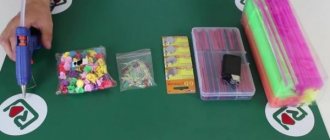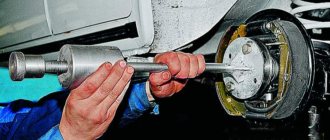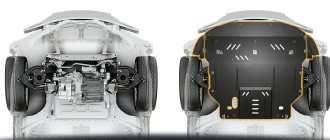The private house I rent is rich not only in apple harvests, because of which I had to squeeze apple juice. With a plot area of eight acres, it can accommodate five walnut trees growing on the borders of the plot.
Therefore, in addition to apples, in fruitful years, a large number of nuts also appear. Much is given away, the rest is consumed locally.
The classic local device for cracking nuts is a hammer with a plank. The speed and convenience of splitting leaves much to be desired.
Of course, you can buy pliers for cracking nuts, but this is certainly not our way. In search of the design of manual nut crackers, we dive into the vastness of the Internet. After some time, there is a page for creative nutcrackers, on which, among others, there is this photo
This design is more than suitable for us, since it does not require complex equipment for its implementation - a jigsaw and a drill are enough. In addition, the nutcracker was originally supposed to be made of wood, so the above option is more than satisfactory for us.
We begin work with the main detail: a sketch of the handle of the nut cracker. We lay a sheet of A4 paper in front of us, take a pencil with an eraser and take a sketch of the pen by eye, adjusting the outline at our discretion. We attach a sample of the nut to the drawing, look - everything seems to suit us in terms of dimensions.
Then we cut out the sketch along the contour to use as a template when cutting.
We glue the paper template onto a piece of solid oak furniture board 18 mm thick. At the same time, we position the template so that the handle consists of almost one shield die.
After waiting about ten minutes for the glue to dry, we cut out the handle along the contour of the template using a jigsaw.
We lay out the cut out handle on the board of the shield, apply the board as an imitation of the base of the nut cracker, and thus mark the eyes for the pin under the handle.
The marked eyes are ready for cutting.
After cutting out the eyes, we put the parts of the eyes and handles together and check that the contours match. In any case, there are small deviations, since the jigsaw file, when cutting in a curved direction, often bends and bevels the side edges.
We cut out the base for the nut cracker from the same furniture board. We connect the parts together. We are making changes to the design along the way. Not being able to make cylindrical parts from wood (of course, it would be possible to make a small lathe based on a drill), we replace the handle axis and pins from the model design with metal elements.
We replace the pins securing the eyes to the base with pieces of a hundred and fifty millimeter nail (diameter 6 mm). We drill through holes, insert the pins with glue, and cut off the protruding parts with a grinder.
We use an M10 hairpin as an axis for the handle (we had scraps on hand). The washers and nuts are screwed onto the stud rather by inertia of thinking; in this case the stud works to shear.
Of course, the product still requires smoothing of edges and sharp edges, grinding and opening with oil. But there is no time to do this, it’s time to try the device for its intended purpose!
Homemade mechanical walnut cracker
You can make a homemade mechanical nut cracker for cracking walnuts with your own hands from leftover materials. To facilitate shell breaking, the lever principle is used. The device looks interesting, the lever is quite large and even a child can handle the job of peeling the nut from the shell. The nut shell cracks easily and quickly.
You can buy it ready-made in this online store.
The base of the nut cracker is a pine board. The dimensions of this part are length 66 cm, width 95 mm and thickness 25 mm. Corners and edges should be rounded. The handle of the device is made of steel tube. Its length is 64 cm. The outer diameter of the pipe is 25 mm.
Assembly
The center of the hole is marked at a distance of 25 mm from the end of the tube. A through hole with a diameter of 8 mm is drilled from the center of the pipe along the diameter. The center of the second diametrical through hole is designated perpendicular to the line of the hole. The distance from the end of the pipe to the center of the second through hole is 110 mm. The diameter of the second hole is 4 mm.
Craftsmen buy inventions from the best Chinese online store.
Cut two steel corners from the profile according to the markings. After the corners have been cut, all sharp corners and edges need to be rounded. This operation is performed with an electric sharpener, but you can also use a file.
After processing to get these dimensions. The height of the bottom shelf is 35 mm. The height of the shelves is 72 mm higher. Bracket length 55 mm. Material 3 mm thick. The centers of two holes are marked on the shelf.
The distance from the bottom plane to the center of the hole is 20 mm. The distance from the left edge of the corner to the center of the hole is 15 mm. The distance between the centers of the holes is 25 mm.
Holes with a diameter of 6 mm were drilled along these centers.
On the larger shelf, in the center, at a distance of 12 mm from the edge, mark the center of the hole. A hole with a diameter of 8 mm is made in this center. The same holes must be made in the second corner. The corners are connected to the lever using a 70 mm long hex bolt, the length of the smooth part of the bolt is 26 mm and the length of the threaded part is 37 mm. Bolt thread M8.
The M8 wing nut is screwed on. The wing nut may not be tightly tightened. The lever should move freely. The lever is located in the center of the board. The offset from the edge of the board to the corner is 10 mm. An awl is used to mark the centers of the holes for attaching the corners to the board.
DIY electronics in a Chinese store.
The corners are placed on the protruding parts of the screws and secured with four M6 nuts. The nuts are tightened with a wrench. The head of the furniture screw should be recessed into the wood on the back side of the base.
Two metal parts were removed from two faulty hydraulic front shock absorbers of the Lanos car. The first part is connected to the lever. To do this, use a screw 50 mm long, M4 thread.
The screw is inserted into the hole of the part. The screw head must be recessed. The screw is inserted into the hole in the lever and secured with a washer and an M4 nut. The second part is attached to the board through a wooden spacer.
Its width is 35 mm, thickness 10 mm, length 95 mm.
The position of the lower metal piece on the board is determined using a walnut. In a certain position, the backing is attached to the board using screws. Through the hole, the metal part is attached to the lining and base. For fastening, use three wood screws 32 mm long. All screws are tightened until they stop. The heads of the two screws should be recessed into the wood.
Limiter
The stopper is necessary to ensure that your fingers do not hit the base while cracking the nuts. The dimensions of the limiter are length 90 mm, height 35 mm and thickness 25 mm. The distance from the edge of the board to the stopper is 26 cm.
The limiter is attached to the base with two screws 50 mm long. They are screwed from below through pre-drilled holes. The screw heads must be recessed into the boards.
In the lower position of the lever, the distance between two metal parts is 10 mm. After control assembly and operation check, the nut cracker is disassembled. Wooden parts are puttied and painted. The corners and pipes of the handle are cleaned and painted.
After drying, the nut cracker can be assembled into working condition. A PVC garden hose is placed on the free end of the lever. The length of the hose is 30 cm. The material of the hose reduces hand discomfort when touching metal.
The walnut nutcracker is fully assembled and ready to use.
Another article discusses the method of fastening wood.
Large screw nutcracker
This is a nutcracker that is simple and enjoyable to use. It breaks sturdy nuts with a smooth turning action and offers elegant control. The design is a combination of wood and metal construction. You can hold it with one hand with the nut in place and turn the screw with the other hand. It is very convenient and pleasant to use. This Instructable section describes the basic design details involved in making this Nutcracker style.
Large screw nutcracker
This is a nutcracker that is simple and enjoyable to use. It breaks sturdy nuts with a smooth turning action and offers elegant control. The design is a combination of wood and metal construction. You can hold it with one hand with the nut in place and turn the screw with the other hand. It is very convenient and pleasant to use. This Instructable section describes the basic design details involved in making this Nutcracker style.
Step 1: Materials
You will need a large screw and a small piece of strong wood. The nut crackers shown here have large 3/8-16 stainless steel cap screws that are 3″ long. The pressure pad for the end of the screw was made on a lathe from 3/4″ diameter stainless steel rod and 3/4″ diameter brass rod for the threaded sleeve.
Step 2: Shaping the Body
The rectangular body of the nutcracker measures approximately 3-1/2" by 3" by 1-1/2". The nut pocket was gouged out with a 2-1/8" diameter Forstner bit to a depth of 1-1/4"; this left a 1/4" thick wall behind the cavity, adding much needed strength to the cracker. The round shaped cracker started with a slightly wider piece of wood to leave a slightly thicker wall around the nut pocket; After boring the cavity, the workpiece was cut and ground to a round outline. This shape fits the palm very well. The hole for the brass bushing is centered so that the axis of the screw is in the center (that is, front to back and side to side) of the nut pocket. Threaded bushings are shown in the photo.
Step 3: Processing the Large Screw
The end of the screw was turned to the smaller thread diameter for a short length as seen in the photo. These particular screws have very finely machined smooth and almost polished threads to ensure the nutcracker operates smoothly. The pressure pad is made of 303 stainless steel. The concave tapered end helps lock and hold the nut in place when turning the screw.
Step 4: Processing
The handle for turning the screw is a 2" x 1" diameter birch dowel designed to hold the head of the screw. The ends are rounded and ground smooth for a comfortable grip. The handle is secured to the screw with a generous application of clear epoxy.
Step 5: Applying Beeswax
Treatment with a mixture of beeswax and pure mineral oil. When used, this compound is warmed slightly until it becomes very soft and almost liquid, then rubbed in. After some time, the piece is polished with a soft cloth. If the wood is sanded nice and smooth, this beeswax finish gives the piece a nice velvety finish.
Step 6: Final Assembly
The threaded bushing is held in place by a lightweight epoxy coating. Note that the bushing flange is inside the cavity, so it takes a significant amount of thrust when nutcrackering. Once the screw is turned halfway, the pressure pad is permanently secured using a strong holding compound such as Loctite 609. There is no need to disassemble the nutcracker after this!
Step 7: Two Finished Nutcracker Nutcrackers
The author actually made four of these and gave three as Christmas gifts - with extra nuts.
Unusual and different nutcrackers for nuts
Surely, everyone loves nuts - some walnuts, some pistachios, some hazel, some all in a row. But it’s unlikely that anyone enjoys cracking nuts. Inventive designers are working to make this process more enjoyable and convenient. I offer a selection of the most interesting tongs for cracking nuts)))
Elegant solution in high-tech style)))
This is probably the most elegant option - it was invented by Christopher Kuh . All you need to do is put the nut inside this aluminum tube (with the cutters inside) and turn its halves in the desired direction. And there is no need to knock, risking hitting your fingers)))
They put it in, twisted it, poured it out, ate it)
The best master at cracking nuts is, of course, the squirrel. And designers never tire of playing with this theme. The squirrel is made of heavy metal so as not to be cracked instead of a nut.
Norpro Davy Crack
Scoiattolo Nutcracker by Andrea Branzi
This thing reminds me of some kind of weapon of the medieval inquisitors - complex, iron, terrible) Five points of contact ensure rigidity and reliability, increasing the chances of getting a solid core.
Reed's Rocket Nutcracker
A very portable and practical nutcracker called the Drosselmeyer Nutcracker , it has a double action lever inside and a container for collecting the shells. Truly a very convenient device - the nut splits easily without flying apart, it is convenient to use and clean. Made in Sweden, technology patented.
This thing is called the Nambe Eclipe Nut Bowl and is a massive wooden bowl with tongs. Designer Wel Young is its author, and it costs a lot - $75, thanks to the unique alloy (from which the tongs are made) and the design of the heavy bowl (from acacia).
Hillary Nutcracker is a nutcracker with the face and “character” of Hillary Clinton. In addition to direct functionality, it carries features of subtle American humor)
This snub-nosed nutcracker is called Cracky. According to the authors (designers Jack Mankiewicz and Odin), the profile belongs to half dolphin and half Tyrannosaurus rex. A nut of any size and any “breed” will fit into this mighty mouth (except, perhaps, coconut).
Antique style Victorian Crescent Moon Ironwork Nutcracker . This cool nutcracker is cast from iron and works to last.
- This is OXO Good Grips Slim Nut/Seafood Cracker , a cracker for nuts and shells of edible sea creatures (crab and lobster claws, for example). It looks simple and stylish, works functionally, and is easy to clean)
An unusual fish-shaped nutcracker is called Fish Nut Cracker. Made of stainless steel, designed by Philippi designers.
Here's an interesting thing - Bruno Christesen Nutcracker , nutcracker and anti-stress in one item. The nut is placed on a metal platform, covered with a rubber dome and cracked when struck with a fist. In fact, everything is easy, no great force is needed thanks to the well-thought-out metal design.
- Here are a few more options for nutcrackers and different nutcrackers that will help you fall in love with the process of not only eating nuts, but also peeling them. Walnut is an excellent product, tasty and very healthy, so there is no need to be lazy)
- Antiques
- A scary version of the Nutcracker
- and classics - normal Nutcrackers
Source: https://monemo.ru/culture/neobychnye-i-raznye-schelkunchiki-dlja-orexov/
DIY industrial nut cracker
This is the hardest part and took me the most time because by nature I like to make my projects complicated.
I started with a regular steel pipe and welded some plates on it to cap both ends. I then drilled smaller holes in the now closed sides that matched the shaft I was using.
Electronics for DIYers in a Chinese store.
In the video you will see that I used a lathe to cut down the diameter of the shaft. This is an unnecessary step. I did this because the pipes were imperial diameter and my bearings were metric, so the pipe was a few millimeters too thick for the bearings and I needed to trim it down.
The shaft must be strong enough because relatively large forces can be generated when the nut cracks. I then welded some cross members to the roller so it could grip the nuts more effectively.
If you don't have all that metalworking tooling, you could probably skip the hardwood roller and you could screw some metal plates onto it to act as teeth for gripping the nuts.
The plate is just 2 thick pieces of rolled stock (5mm thick) that I welded together to get the required width. It must be strong enough to withstand the forces required to crack the nuts without bending. I used some primitive DIY hinges to hold the plate in place. Behind the plate is a large screw that pushes the plate forward to set the desired operating gap. I also added another screw for the anti-rattle system. It's basically a screw screwed into the plate itself and you use a nut to tighten the plate back so it doesn't rattle or bounce as the nuts crush, causing unnecessary noise.
Do-it-yourself nut cracker: made of wood, electric and mechanical
How to make a nut cracker with your own hands
In the fall, when it’s time to collect walnuts, many people wonder how to make a homemade walnut cracker. Peeling nuts with a hammer is not very convenient and takes a long time, but a hand-made mechanical nut cracker is quite capable of effectively coping with the task.
On the Internet you can find many diagrams and designs of homemade nut crackers. Some of them will require wood to make, but stronger structures are better made from metal. How to make a nut cracker with your own hands will be discussed in this review of the construction magazine samastroyka.ru.
DIY wooden nut cracker
The nut cracker is made of wood and has a rather interesting and original design. To make it, it is enough to use a two-centimeter edged board, from which you will need to cut out a shaped handle and a base for the nut cracker using an electric jigsaw.
You will also need two side bases, to which a handle will be screwed through a pin. It must be made in such a way that when pressed, it crushes the walnut peel with its protrusion. It goes without saying that on the base, in the same place, there should be a small recess for the nut itself.
Mechanical nut cracker made from pipe
A more complex design, which is much stronger than a wooden one, is the design of a mechanical nut cracker. As in the first case, this homemade nut cracker consists of a base, which can be used as a board or MDF board.
Two metal corners are screwed to the board at a short distance from one edge, and a movable handle is fixed between them on a pin. A small nut stop is attached to the handle itself, and exactly the same one is installed on the wooden base. The advantage of a mechanical nut cracker of this design is much greater stability and ease of use.
How to make an electric nutcracker
If you need to peel a large amount of walnuts and doing it by hand is problematic, then you can make an electric walnut cracker with your own hands. Such a nut cracker is capable of splitting a bucket of nuts in one go, and more, it all depends on the size of the loading hopper and the length of the metal rollers.
The design of an electric nut cracker is as follows:
- There is a metal hopper in which metal rollers are located at a short distance (the diameter of an average-sized nut);
- An electric motor that transmits torque through a belt to one of them;
- When you pour nuts into the hopper and turn on the electric motor, the rollers begin to split the nuts, and they are automatically squeezed down without damaging the core.
An electric motor from an old washing machine is quite suitable as a motor for a nut cracker.
Rollers can be made from two identical pieces of metal pipe, an inch and a quarter or more. Thus, you can quickly peel a walnut at home, and then sell it for a much higher price or eat it all winter while preparing delicious pies.
Source: https://samastroyka.ru/orexokol-svoimi-rukami.html
Now the principle of operation of the nut cracker:
Place the nut under the handle and press. The size of the nut can be any, here I have not limited it in any way!
Photo: wooden nut cracker in action Photo: wooden nut cracker Photo: wooden nut cracker
If you liked this idea for making a nut cracker, then using this guide, you can make one for yourself.
And subscribe to the channel!
All the best! Photo: wooden nut cracker
DIY nut cracker
DIY nut cracker
Peeling a walnut so that it remains intact is quite problematic, since most often the kernel splits into many parts. In many cases, a hammer and various devices come to the rescue, helping to greatly simplify the cleaning of walnuts.
However, it is problematic to peel many nuts with a hammer, and in this case it is also difficult to maintain the integrity of their kernels. Therefore, many people will find such a device useful on the farm as a homemade nut cracker; making it at home will not cause any serious problems.
What to make a homemade nut cracker from
You can make a nut cracker with your own hands from various materials, so the design of the nut crackers can be different. But the essence is the same: some pressure must be applied to the nut shell to crack it. There should also be a limitation so as not to crush what is behind the nut skin.
In most cases, homemade nut crackers are popular because their operating principle is reminiscent of a vice or a hand-held device in the form of a press. Its design includes the following elements:
- Base - it should be wide and long enough to have greater stability;
- A handle - through which this same pressure could be applied to the nut shell;
- Spring - which pushes the handle back to the top position;
- Two walnut seats - one is attached to the handle, and the second to the base;
- And two L-shaped elements with holes for installing the nut cracker handle.
In fact, a do-it-yourself nut cracker has a fairly simple and uncomplicated design. You can see it with your own eyes in the pictures, but you can learn more about making a nut cracker from the second half of this article on the construction site https://remstroisovet.ru.
So, you should start making a nut cracker with your own hands by making a base, which can be used as a thick edged board. On one side, along the edges, you will need to attach L-shaped holders cut out of metal for the handle of the nut cracker.
On one side, the holders are screwed to the board using self-tapping screws, and in the other, upper part, one hole should be made for a long bolt, which will hold the handle itself.
The handle of the nut cracker is best made from a half-inch pipe, about 60-70 cm long. At one edge of the pipe, a through hole should be made, the same diameter as the hole in the L-shaped holders. It is designed to fix the nut cracker handle to them using a bolt, two washers and one nut.
At a distance of 10-15 cm from the holders, it is necessary to provide two seats for nuts. They need to be made of durable materials that can, under some pressure arising from the handle, act on the skin of the nuts.
- Finally, in order for the nut cracker handle to independently recline to the upper working position, it is necessary to install springs on the other side of the holders.
- However, this is not at all a necessary element for making a walnut cracker with your own hands, without which it will already cope with the task of peeling walnuts.
Industrial devices
For those who sell shelled walnuts, it is important to keep as many kernels intact as possible. For high-quality and quick cleaning in such cases, special devices are used. Their design is a loading hopper, in the lower part of which there are rotating metal rollers. Once the machine is turned on, the rollers easily break even the toughest shells. Thanks to this, it is easily separated from the kernels; this process is already done manually.
Factories use special industrial equipment. Different models of such machines have different productivity, and some units are capable of not only splitting, but also peeling the kernels.
Extracting whole, intact kernels from walnuts is a labor-intensive process. This can be done using various tools. The main thing is to practice and get better at it, and then this process will not seem so difficult and tedious.
Homemade nut cracker
Hello to all DIY lovers!
As you know, nuts are very good for health. They are recommended for regular use by people of all ages. Moreover, it is the whole nuts that are not pre-cracked that are truly useful, which it is advisable to eat immediately after cracking.
Therefore, it is best to buy whole nuts and crack them yourself. But this is where a problem often arises.
While small nuts such as hazelnuts or hazelnuts can still be cracked quite easily, large and strong walnuts can sometimes only be cracked by a healthy and strong man.
This is also facilitated by the fact that most nut crackers are hand-type, that is, they are driven by the muscular force of the hand, which again is not a problem for a physically strong man. But for physically weak people, such as women, children and the elderly, this often presents an insurmountable problem.
What to do in this case. You can, of course, take some heavy object, for example, a hammer and crack nuts with it. But on the one hand, this is not a very clean procedure, since shell fragments fly all over the room, and on the other hand, it won’t take long to get injured if, say, you accidentally hit your finger with a hammer.
Faced with this problem, I decided to make homemade walnut tongs. Moreover, the peculiarity of the design of my tongs is that they are activated not by the hand, but by the entire hand, by pressing on the lever, which makes it easy to crack nuts with such tongs even for physically weak people.
Below is a drawing of these tongs.
From the drawing I think everything is quite clear. However, I want to explain some details in more detail.
So holes No. 1 and No. 2 in the drawing are intended to rearrange the axis of the upper arm depending on the size and hardness of the nuts. The fact is that I noticed that walnuts can be divided into two groups. The first group consists of fairly large nuts with a not very strong shell. Hole No. 1 is intended for them.
The second group is smaller nuts with a very strong shell. Hole No. 2 is intended for them, which allows you to crack fairly strong nuts by reducing the section of the upper lever arm between its axis and the place where the nut is cracked.
In addition, by moving the upper lever to hole No. 2, you can chop smaller nuts, such as hazelnuts.
Materials and tools
For production we will need:
Source: https://www.freeseller.ru/4809-samodelnye-schipcy-dlya-raskalyvaniya-orehov.html
Tricky tongs for chopping seeds and almonds Mingrizhiguang home (steel, 9*5.5 cm)
Price: from 94.88 rub. (check price and discount)
Seller's reliability: excellent!
Delivery within Russia: free!
Tired of ruining your teeth on pistachio shells or seeds? Then try special tongs. They are designed for such small jobs. Just place it in the hole and squeeze the handles. Click and you're done! The tongs look like scissors; they are made of durable steel and measure 9*5.5 cm.
Buy yourself a couple of these things in reserve and enjoy nuts without harming your teeth!
Be sure to order nutcrackers on Aliexpress with free delivery throughout Russia.
It’s a good thing, the seeds click perfectly. Let's see how long it will last.
GAMER
Pine nuts crunch well, but you need to get used to it. I haven't tried other seeds yet.
PloHish
Excellent!
PloHish
View on AliExpress:











